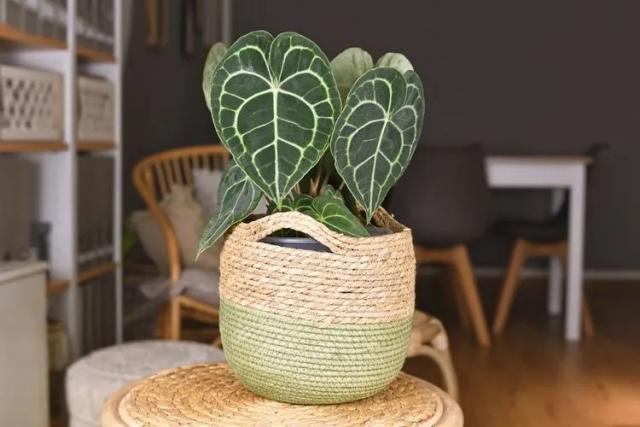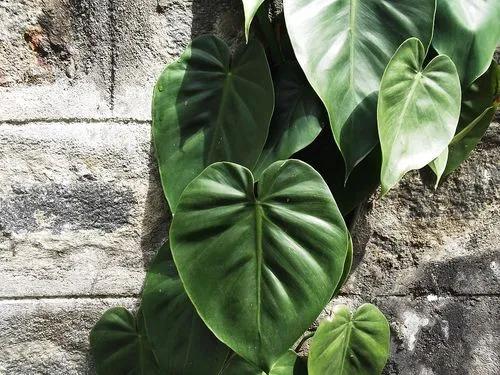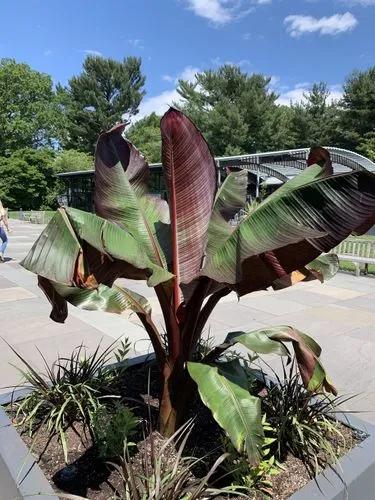The Dwarf Cavendish Banana, originating in East Asia, is a cool houseplant variety and a fun little plant for an outdoor space as well. Even though it’s unlikely to bear tasty banana fruits when growing indoors, it would be quite an eye candy for any room.
Dwarf Cavendish Banana Care
Musa acuminata
Other names: Dwarf Cavendish Banana Plant, Dwarf Banana Tree



The Musa acuminata’ Dwarf Cavendish’, a variety of the Musa plant, features large, luxuriant paddle-shaped leaves with early maroon or purple markings that fade over time. Despite their delicate nature, these plants are suitable for well-lit sunrooms, conservatories, and garden rooms. Reaching an average height of 8 to 10 feet (2.4-3 meters), the plant’s short stalk produces large green leaves that spiral out from the center, eventually bearing sizable flowers and regular-sized bananas.
How to Care for the Plant

Water

Like all Banana plants, this one is quite thirsty due to its tropical origin. The soil should always feel damp (not mushy and waterlogged, but damp), especially if growing indoors, because those tend to dry quicker. On average, watering every 3 days will do fine, but don’t water if the top 2 inches (5 cm) of the soil feel too moist.

Pruning

Pruning needs are quite minimal: cut the diseases and dry leaves along with the oldest ones (that eventually break off under their own weight anyway) to concentrate the plant’s efforts on new foliage.

Fertilizer

Maintain the soil quality of your Dwarf Cavendish Banana by fertilizing every 2 months with a 6-2-12 fertilizer, ensuring that the nutrients reach the root system by applying the fertilizer immediately before watering.

Sunlight

This plant should get the location where it receives the most sunlight, such as a south-facing windowsill. On average, a Dwarf Cavendish Banana should get around 6 hours of direct sunlight. It will still be growing with partial sun and fewer light hours, but it’ll be slower.

Soil

Buy a well-draining, loamy soil – it’ll help the water to go through faster and not accumulate. Also, good soil will have an acidity of 5.5-6.5 pH. To mix your own soil, choose clay, silt, and sand because they replicate its original habitat.

Propagation

To propagate it:
- Select a healthy plant with young suckers and use a disinfected knife to cut the offset as close to the main plant as possible.
- Ensure some roots are intact and transfer it to a well-drained potting mix in a new container with bright, direct light.
- Apply cutting powder to the cut area if available.
After, place the cutting on a sunny windowsill, preferably facing south, to allow the new plant to establish itself, even though it may initially appear droopy as it adapts to its new environment.

Temperature

This Banana plant thrives in temperatures ranging from 64 to 80°F (18 to 27°C), but it can withstand lower temperatures down to 50°F (10°C). It’s important to shield it from cold drafts. Additionally, maintaining high humidity levels is crucial for lush and vibrant foliage; otherwise, the leaves can dry out and become brittle in dry conditions.

Container

Even though the name of the plant paints this fruit tree as a miniature one, it still requires quite a spacious pot to accommodate its roots and its growing speed. Thus, 12-18 inches (30-45 cm) in diameter would be a nice starting point. The material of the container doesn’t matter, but make sure it has drainage holes and a saucer to collect and dispose of excess water – it’ll really help with avoiding waterlogging and rotting roots.

Popularity

4,142 people already have this plant 853 people have added this plant to their wishlists
Discover more plants with the list below
Popular articles






